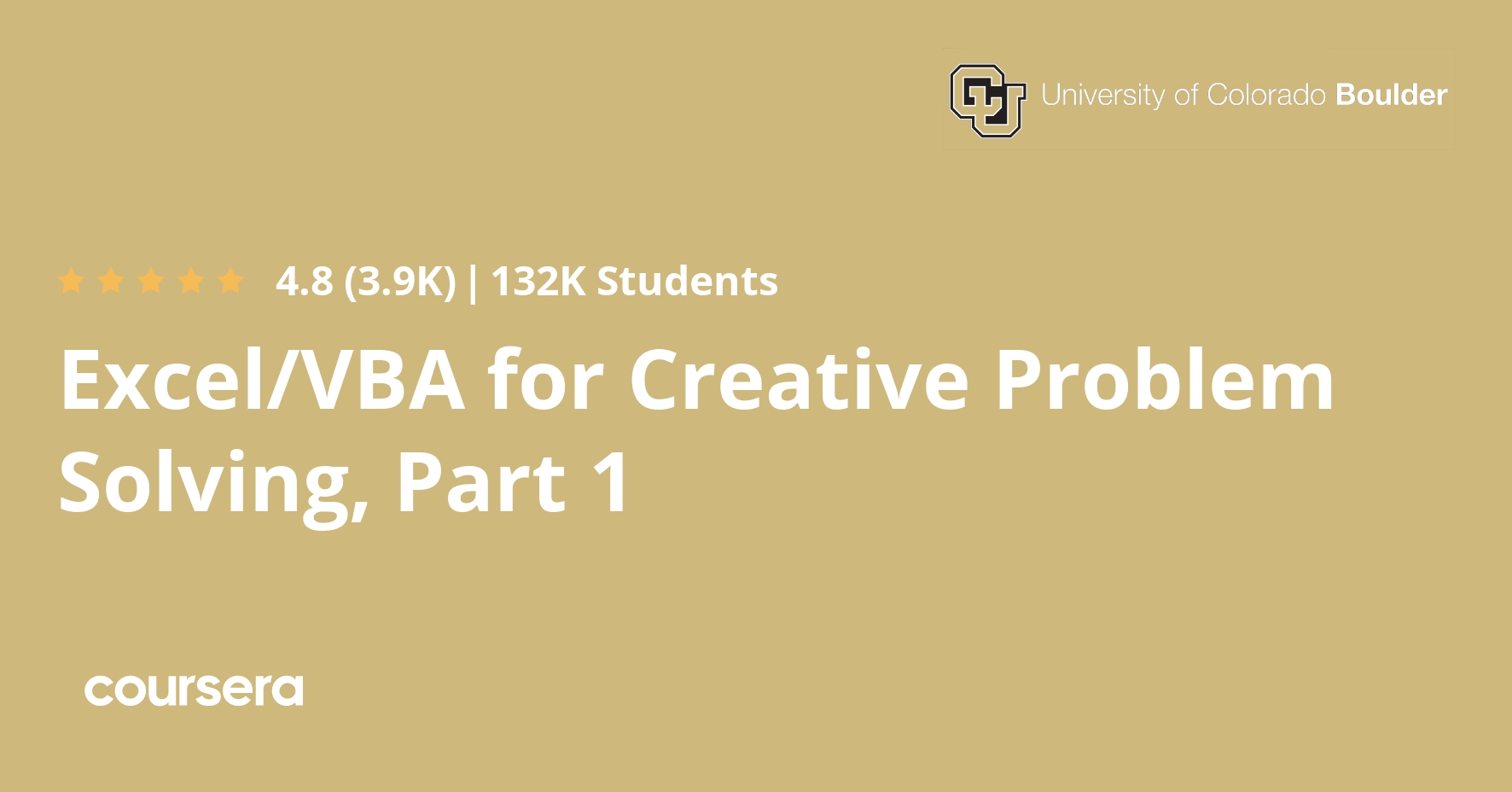Description
“Excel/VBA for Creative Problem Solving, Part 1” is aimed at learners who are seeking to augment, expand, optimize, and increase the efficiency of their Excel spreadsheet skills by tapping into the powerful programming, automation, and customization capabilities available with Visual Basic for Applications (VBA).
This course is the first part of a three-part series and Specialization that focuses on the application of computing techniques in Excel/VBA to solve problems. In this course (Part 1), you will: 1) create macros to automate procedures in Excel; 2) define your own user-defined functions; 3) create basic subroutines to interface with the user; 4) learn the basic programming structures in VBA; and 5) automate Excel’s Goal Seek and Solver tools and use numerical techniques to create “live solutions” to solve targeting and optimization problems.
New to computer programming? The extremely intuitive and visual nature of VBA lends itself nicely to teaching and learning – what a fun way to learn to code! No prior knowledge in programming nor advanced math skills are necessary yet seasoned programmers will pick up new and creative spreadsheet problem solving strategies.
After you have learned the basics of VBA, each module will introduce foundational and broad problems inspired by situations that you might encounter in the real world. To pass each module, you’ll need to pass a mastery quiz and complete a problem solving assignment. This course is unique in that the weekly assignments are completed in-application (i.e., on your own computer in Excel), providing you with valuable hands-on training.
What you will learn
Macro recording, VBA procedures, and debugging
Week 1 will introduce you to visual basic for applications (VBA) and teach you the foundational tools required to create basic procedures in VBA. You’ll learn about different data types and the scope of variables, how to troubleshoot your code when it’s not working, and how to record basic macros using both absolute and relative referencing modes.
VBA Nuts & Bolts, Part 1
In Week 2, you will learn how to write proper VBA syntax and basic mathematical expressions; you will learn about objects, properties, methods, and events; and you will learn how to borrow common Excel functions using VBA code. In addition, you will learn how to move information to and from Excel and the Visual Basic Editor (VBE).
VBA Nuts & Bolts, Part 2
In Week 3, you will learn how to create your own user-defined functions. You will also learn how to call other subroutines and functions that reside in other files and you will learn how to design subroutines based on a modular approach. Finally, ,you will learn basic error handling in VBA.
Programming structures in VBA
Week 4 begins the “meat” of programming in VBA, and we are finally moving into some exciting problem solving. You will learn about the common programming structures in VBA (sequence, selection, and repetition) that form the foundation for advanced programming procedures. Several examples will highlight the utility of these programming structures.




